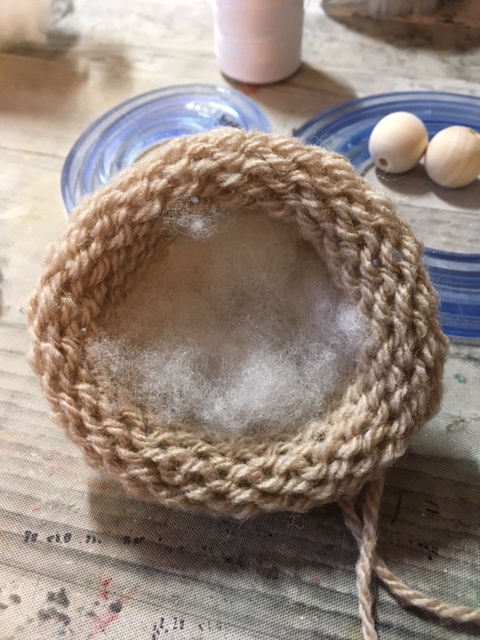So I mentioned yesterday that I was knitting charity squares for a local project, the Gillingham CommunKnitty KindNose “Bringing Gillingham together while keeping apart” project for Red Nose Day.
So once I confirmed that when they say WOOL they mean YARN and acrylic is OK, I started knitting. I really need one of my British friends to explain that to me – why is all yarn called WOOL, no matter the fibre content? It matters, sometimes, if you need to consider washing items (mixing cotton, wool and acrylic fibres in one blanket, for example, is a recipe for wash-day disaster) so why use a misleading term? Or is it that one should assume if a charity wants a particular fibre ONLY they will say so and if they don’t you could assume WOOL and YARN are interchangeable? Except when they say WOOL they might mean either ONLY wool or any yarn. {sigh}
I have ALWAYS struggled to knit “perfect” squares. There is just too much pfaffing about with gauge for all the different sorts of scrap yarn, adjusting the cast on and stitch count, getting the right pattern (if other than a straight stocking stitch or garter stitch square… Bah! I waste so much time trying to get it right, I went on a hunt for a few foolproof patterns that knit up as a square, almost despite my best efforts to screw it up! I found three (two for sure, one sort-of.) Bear in mind none of the squares are blocked at all, so maybe looking a little wonky in the photos LOL!
The traditional dishcloth pattern.
This is simple and has a cute YO edging and only two pattern instructions, after the cast-on of 4 stitches and Knit one row.
- Increase row (and every row till one side = your finished measurement): Knit 2, YO knit to the end.
- Do this till one side is the desired size of your final square. My squares need to be six inches so I knit till one side = 6 inches
- Decrease Row (and every row till four stitches remain) Knit 1, K2Tog, YO, Knit to the end.
- When four stitches remain, bind off all four stitches, break the yarn, and pull thru.
Easy peasy.
An easy corner-to-corner square.
- Cast on 3 stitches and knit the first row
- Increase half, every row: K1, KFB, K to the end of the row (you can also KFB in the first stitch, K to the end – swings and roundabouts….) Do this till one side is the size of your final square. My squares need to be six inches so I knit till one side = 6 inches
- Decrease half (till three stitches remain): K1, k2tog, to the end of the row
- When three stitches remain K3tog, cut tail and pull through.
A super easy and cute variation on this is to do all the increase rows in ONE colour and then all the decrease rows in another. Perfect when you have a bit f yarn but not quite enough to manage a full square. Like so:
An easy mitered square – OK so this one does need you to cast-on a guess and knit at least a couple of rows to see if you got it right but somehow I find this easier than any other pattern square. For me, with 4.5 mm needles and DK yarn, 58-60 stitches to begin is about right for a 6-inch square.
- Cast on double the stitches you need.
- Row one: Knit one row, placing a marker in the middle (so for 60 stitches: CO 30, place marker, CO 30.)
- Row two (and every even row): Knit to two stitches before the marker. K2Tog, slip the marker, K2tog. Knit to the end
- Row three (and every odd row): knit
This is the easy garter stitch version. I also do a variation on this that has a Slip 2 as if to knit, K1, p2sso on the right side and a purl in that stitch on the wrong side, and a stocking stitch version, also with a purl in the centre stitch on the wrong side, but this simplest version is the best one for charity squares!
So, those are the three squares I settled on, after knitting a few only to get to the end and find they were A. NOT square or B. not 6 inches! I feel for the people who will be putting these together, so I really want to make them as close to the right size as I can. Only 12 done, but I hope to get to 20 or 25 by Saturday.
Back to papercraft tomorrow, I’m sure – oh – and it’s WOYWW day so I’d better get tidying for sure. But not before I add my 100 days page:
Keeping well away from bulk in the middle LOL!





















































